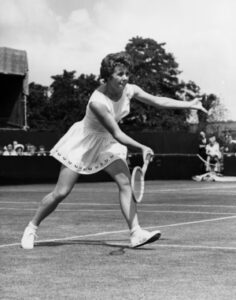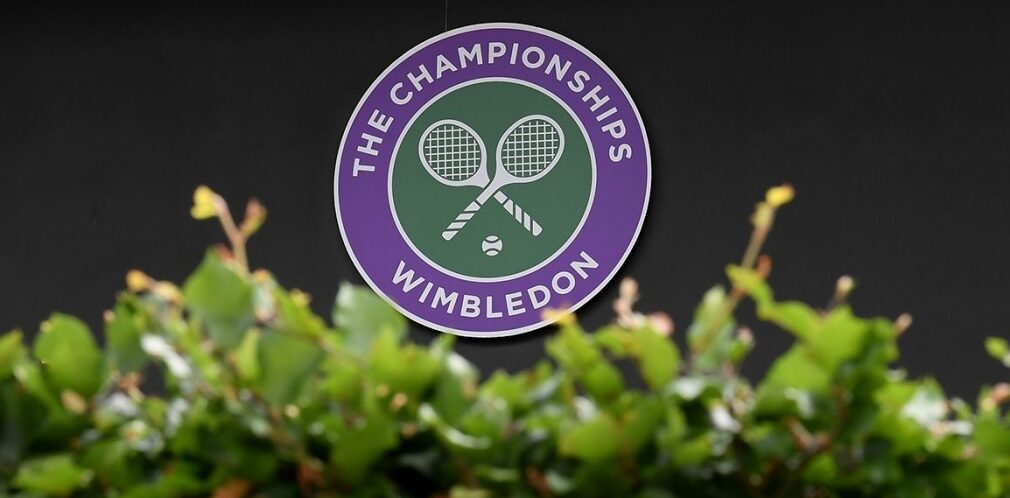Last weekend’s finals at “The Championships” was a disappointing closing sequel to the Roland Garros opener of the 2025 edition of “the channel slam”. My review of the RG finals, in HL 200 (“The Roland Garros Finals and a Moment for Women’s Sports” June 12, 2025) is referenced and hot-buttoned here.
On Saturday, July 12, Iga Swiatek doubled bageled Amanda Anisimova (6-0, 6-0) in 57 minutes. On Sunday, July 13, Jannik Sinner defeated Carlos Alcaraz (4-6, 6-4, 6-4, 6-4) in three hours and four minutes.

Iga Swiatek & Amanda Anisimova
On the women’s side, it was a tall order to disappoint more than the error prone, wind plagued but lengthy final won by Coco Gauff, punctuated by World 1 Aryna Sabalenka’s worst ever response to defeat in a slam final. But the Wimbledon final succeeded by a good measure. Going in, the match had the ingredients of a great and dramatic final. Both players arrived with the opportunity for complete redemption relative to their own recent professional and personal low points.
Swiatek, for many years almost unbeatable on clay, former World 1 and winner of five slams (4 RGs and a U.S. Open) had dropped to World 8 and had not won any tournament in over a year. She ended the recent long European clay season losing her RG crown in a semifinal loss to Sabalenka that ended in an unthinkable third set bagel.

Carole Caldwell Graebner
Anisimova, a former U.S. Open junior champ and teenage star, who reached the RG semis at 17, had plunged to World 189 last year and failed to qualify for the 2024 Wimbledon main draw. While Swiatek was clearly favored to win, Anisimova’s great skills, perfectly suited for grass, and her previous six victories culminating in her defeat of World 1 Sabalenka, promised a compelling final. Instead, it was the most painful final to watch in memory. A point constantly made by all the commentators during the match.
There may or may not be any crying in baseball, and we know there is in tennis, from an iconic photo of Federer in HL 200 and having seen Djokovic and Nadal in tears after historic matches. But Anisimova was crying throughout the second set of this one. The only final I recall that rivaled this for pain was in 1964 when Maria Bueno beat Carole Caldwell Graebner (6-0, 6-1) in the U.S. National finals at Forest Hills. And then only because in the trophy ceremony, U Thant, Secretary General of the United Nations, presenting Graebner her trophy told her “I’m sure you will practice and try to improve.”

Maria Bueno
The pain in this year’s final was less from Swiatek’s dominance, something that has occurred many times in both men’s and women’s grand slam finals and more because on many points Anisimova seemed unable to move and moderately stroke routine rally balls. In this case the extreme brevity of the match, often used to make invidious comparisons between men’s and women’s slams, was merciful to both Anisimova and spectators.
The men’s final also was disappointing – though the gap between expectation and performance was much narrower. As reported in HL 200, the RG final was an A, with both Alcaraz and Sinner earning that grade and the contest falling short of the A+ finals of 2008 Wimbledon and 2012 Australia because of the mediocre service performance of both players. Last Sunday’s final produced an A- for winner/Sinner and a B+ for Alcaraz. Both RG Sinner and RG Alcaraz would have defeated Sinner on Sunday. Carlos again had a mediocre service day with a 53% first service rate, seven double faults in four sets and an ATP service rating of only 187.
Every element of Sinner’s performance, save his service game, was inferior to his RG performance. But his significantly better service day was the difference on Sunday. He served at 62%, double faulted only twice, won 58% of his second serve points and earned a good – not great – ATP service rating of 201.
As I noted in HL 200 “if either man had served at their pre-tournament average, neither the score nor the points won totals of 193 Sinner, 192 Alcaraz would have been nearly as close” (in the RG final). Sinner came much closer to doing that Sunday and as a result neither the score nor the points won were very close.

Jannik Sinner & Carlos Alcaraz
The service game gap between World 2 but best player Alcaraz (who will finish the year as World 1) and current World 1 Sinner was decisive Sunday. On grass, and even this new grass cultivated to play more like the hard and new clay surfaces, the service game is at least 40% of the entire equation.
All in all, this was a very entertaining Wimbledon, concluded with two disappointing finals. The last and usually best slam, the U.S. Open, begins in less than six weeks. It might but probably won’t end with a third straight Alcaraz/Sinner final. Both Taylor Fritz and Ben Shelton are steadily narrowing the gap between them and the top 2. And their strength in the service game is precisely the area where both Sinner and Alcaraz have now demonstrated vulnerability. Commentators want to, but this one will not, ignore the vulnerability Sinner showed during the Dimitrov match. Yes, he might have come back but was highly unlikely to against a player outplaying him in every dimension, especially the serve.
On the women’s side, I expect a fifth consecutive final involving at least one American woman, with Coco Gauff, Jessica Pegula, Madison Keys and Emma Navarro, the most likely to succeed in that order.



0 Comments